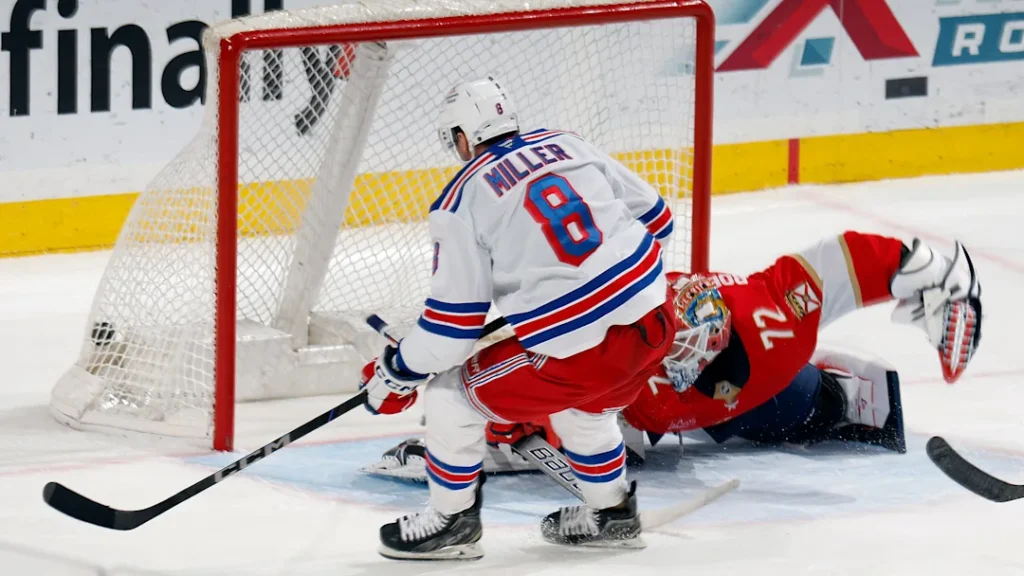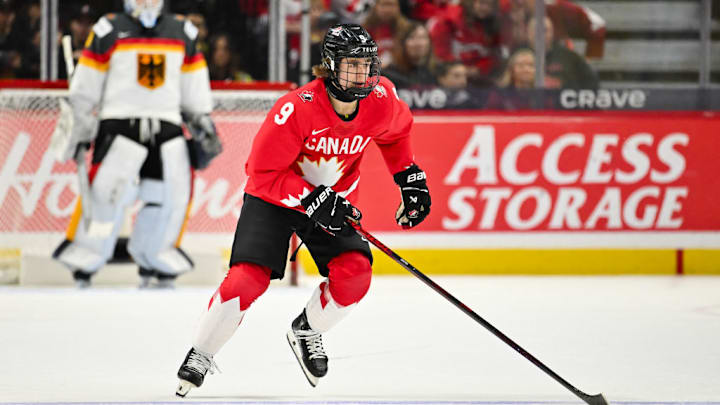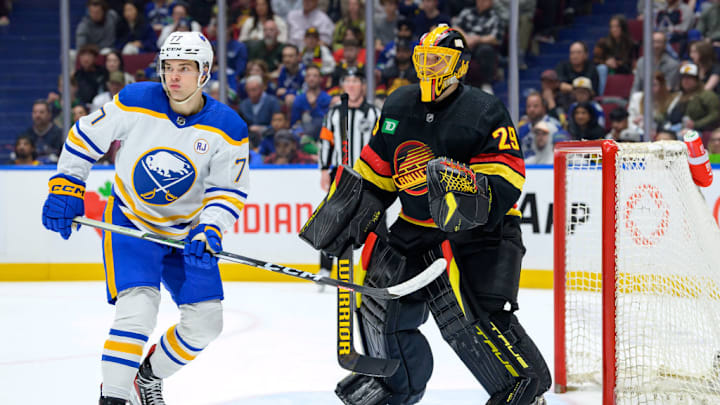
How does the resolution of the J.T. Miller trade impact offseason strategy?
In what was perhaps Vancouver’s final revenge for their 1994 cup final defeat at the hands of the Rangers, the Canucks put Drury in a precarious spot. Due to the conditions of the pick, he was presented with a choice: keep the 12th pick in a weak draft and risk giving a division rival an unprotected first round pick in a loaded 2026 draft, or renounce the 12th pick and retain next year’s first.
While giving a lottery pick to Pittsburgh was certainly not ideal, Drury’s decision to give up the 12th pick in Friday’s NHL entry draft allows significantly more flexibility going forward.
Option 1: Using the 2026 Pick

One of the top incentives for the Rangers to keep their pick in next year’s draft is for a shot at the top prize: Gavin McKenna of the WHL. McKenna posted an absurd 129 points in 56 games for Medicine Hat, and added 39 more points in 16 playoff games. He should be a transformative player for whichever NHL organization is lucky enough to land the number one pick a year from now.
Picture this: The Rangers miss the playoffs. They sit as the tenth worst team in the league, carrying a 3.5% chance at the top pick. Pittsburgh sits as the second worst team in the league, and have a 13.5% chance to hit the jackpot with their own pick. Had Drury sent away next year’s pick, Pittsburgh would have had a 17% chance at McKenna in this scenario.
Could the Rangers turn it around and make the playoffs next season? Sure. But it is simply not worth the risk of jumpstarting Pittsburgh’s rebuild, while forfeiting a chance at the team’s own rapid retool. Imagine in the above scenario, the Rangers pick won the lottery, and Pittsburgh’s pick stayed at two. It would be a disaster for the organization.

Option 2: Trade the Pick for Reinforcements
Due to the perceived strength of the 2026 draft, next year’s pick might be more valuable than this year’s pick, which is locked in at 12. The Rangers could earn the first pick next year. Or the 22nd. Who knows, it could even be 12th again, but with a better group of prospects on the board.
If Drury is serious about trying to compete next season, keeping this pick allows for the most flexibility. He could trade it for whatever type of new blood he decides best fits his team. He could hold on to the pick and trade it at the deadline if the team is competitive. The 12th pick this year sounds nice, but in a few days it is no longer a draft pick, but rather, a player. It becomes more static. Less moveable. Drury has a full year to decide what he does with next year’s pick.
Option 3: Offer Sheet

The potential final trick up Drury’s sleeve could be an offer sheet for a restricted free agent. There are a number of talented players set to be RFAs. If the Rangers want to “offer sheet” any of these players, they will need their first round pick to be available due to the compensation chart. By signing an RFA to a deal worth between $4,680,077 and $9,360,153, the Rangers will need to send the team holding that player’s rights their first round pick in 2026, along with other picks.








